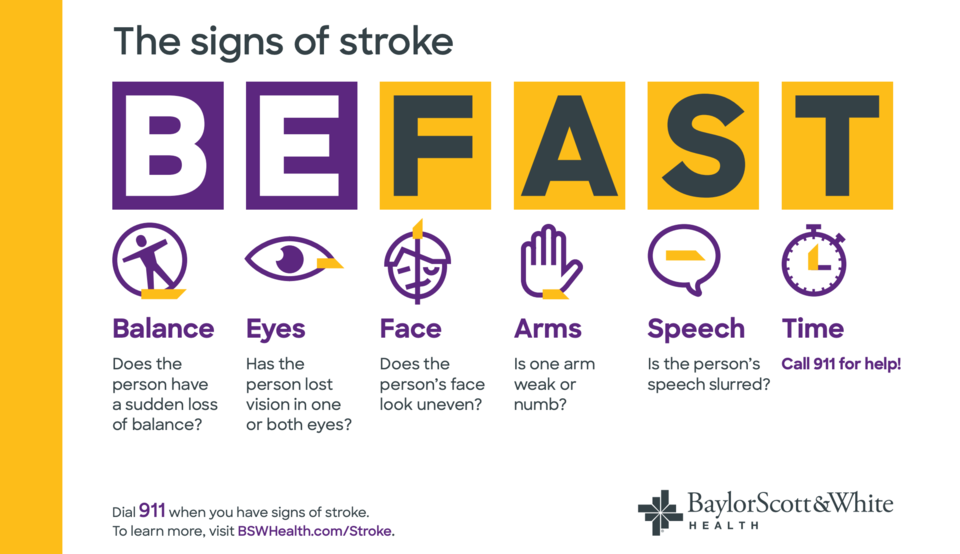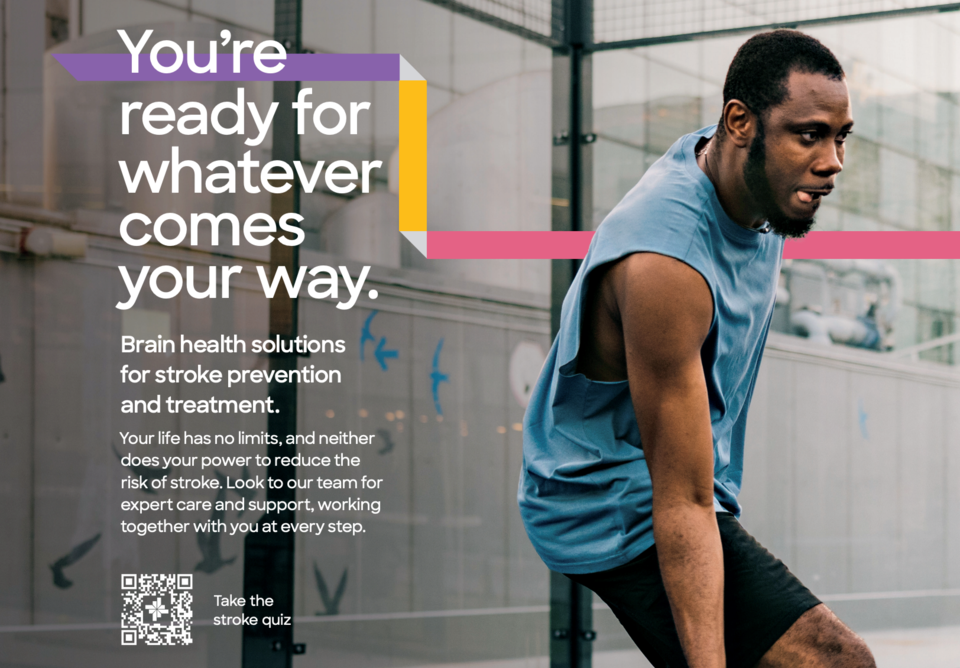STROKE REMAINS a significant health concern in the United States. According to the American Heart Association, it is the fifth leading cause of death. Nearly 795,000 people in the U.S. experience a stroke each year.
A stroke occurs when blood flow to part of the brain is interrupted, causing potential brain damage. Key risk factors include hypertension, diabetes, smoking and obesity. “Stroke can happen at any age, but 80% of the strokes may be prevented,” says Rashedul Hasan, MD, medical director of the Comprehensive Stroke Program at Baylor Scott & White Medical Center – Plano. “Know your own risk and know how to prevent it.”
COMMON MISCONCEPTIONS
One myth is that strokes only affect older individuals. While age is a factor, strokes can also impact younger adults, teenagers and even children. About 38% of hospitalizations are individuals under 65 years old. “Lifestyle choices, recreational drugs, and underlying health issues like diabetes and high blood pressure can lead to strokes in younger demographics,” says Pradeep Panuganti, MD, medical director of the stroke program at Baylor Scott & White Medical Center – McKinney.
The misconception that symptoms that resolve quickly do not require treatment can also be dangerous. These symptoms may indicate a transient ischemic attack (TIA) or "mini-stroke," a critical warning of a potential severe stroke. Another misconception is that strokes always involve pain, headaches or paralysis. Unlike heart attacks, which typically present with pain, most strokes occur without discomfort, delaying urgent medical care. While strokes often affect one side of the body, symptoms can vary based on the affected brain area, leading to cognitive changes, speech difficulties or balance issues.

Recognizing stroke symptoms using the acronym BE-FAST (Balance, Eye problems, Face drooping, Arm weakness, Speech difficulties and Time to call 911) is essential for obtaining timely treatment and improving recovery prospects. Addressing these misconceptions can empower individuals to seek timely care and take proactive steps toward prevention and recovery.
It is crucial to call 911 and transport the patient to the emergency room immediately for evaluation and an urgent CT scan of the brain to identify the type of stroke, with clot-related strokes being more common than bleeding strokes. Aspirin or similar medications should be avoided until the stroke type is confirmed. “This is quite different from heart attack treatment,” says Dr. Hasan.
RISK FACTORS AND PREVENTION
Regular health monitoring is key to stroke prevention. “Checkups can help you track blood pressure, cholesterol and glucose levels,” says Dr. Panuganti. “Early detection and management of these factors can make a significant difference.” As previously mentioned, common risk factors include high blood pressure, diabetes, smoking and high cholesterol as well as family history. High blood pressure is especially critical to manage, as it is the leading cause of stroke.
Adopting a heart-healthy lifestyle is essential. Doctors recommend following the Mediterranean diet, rich in fruits, vegetables, whole grains and healthy fats. “Reducing salt intake by 1-2 grams daily can lower blood pressure,” says Martin Weiss, MD, stroke medical director at Baylor Scott & White Medical Center – Centennial. “Quitting smoking and managing stress are also crucial steps — smokers have double the risk of stroke compared to non-smokers.” Regular physical activity, at least 150 minutes of moderate exercise per week, is also highly recommended.
RECOVERY IS POSSIBLE
Despite its severity, recovery from a stroke is attainable. Rehabilitation can greatly improve the quality of life for stroke survivors. “Stroke recovery depends on the size and location of the stroke, the age of the patient, and preexisting health conditions or comorbidities,” says Dr. Hasan. “With advanced medical therapy and early intervention, complete recovery is very promising.”
“While the initial phase of recovery is critical, research shows that stroke recovery can continue for months and even years with the proper rehabilitation, therapies and lifestyle changes,” says Dr. Weiss. “The brain has remarkable plasticity, meaning that with consistent effort, patients can progress long after the early stages of recovery.”
For both patients and caregivers, emotional support is vital. Dr. Weiss encourages caregivers to seek help from family, friends and support groups to manage stress and avoid burnout. “Creating a structured environment and maintaining open communication with healthcare professionals can make stroke recovery more manageable,” adds Dr. Panuganti.

To learn more about personal stroke risk, scan the QR code to take a stroke risk quiz.
Legal Disclaimer: Physicians provide clinical services as members of the medical staff at one of Baylor Scott & White Health's subsidiary, community or affiliated medical centers and do not provide clinical services as employees or agents of those medical centers or Baylor Scott & White Health.




